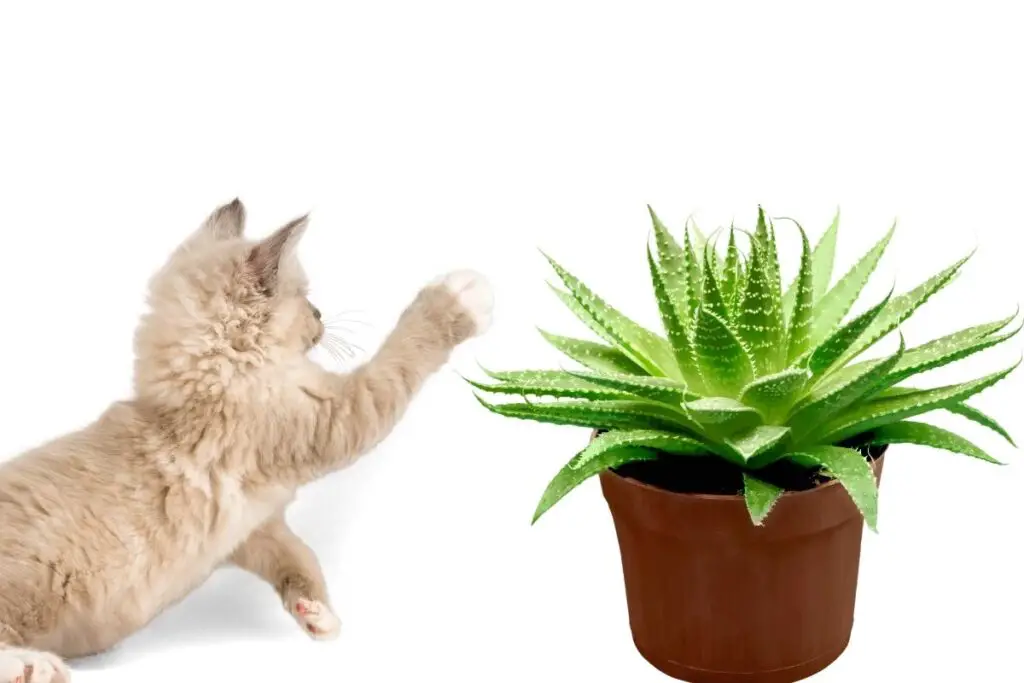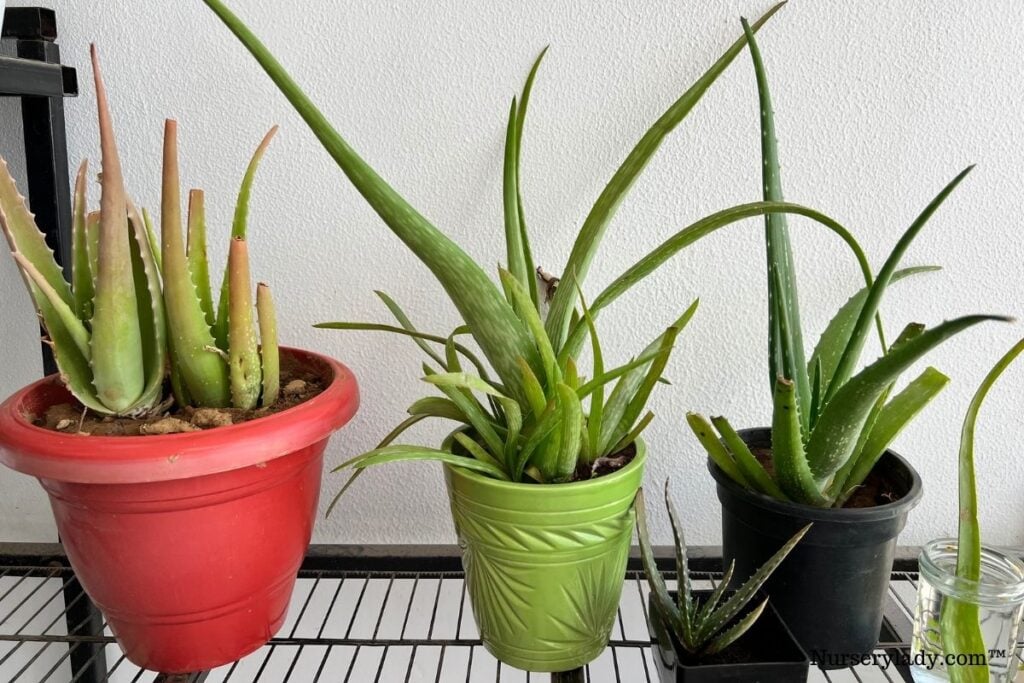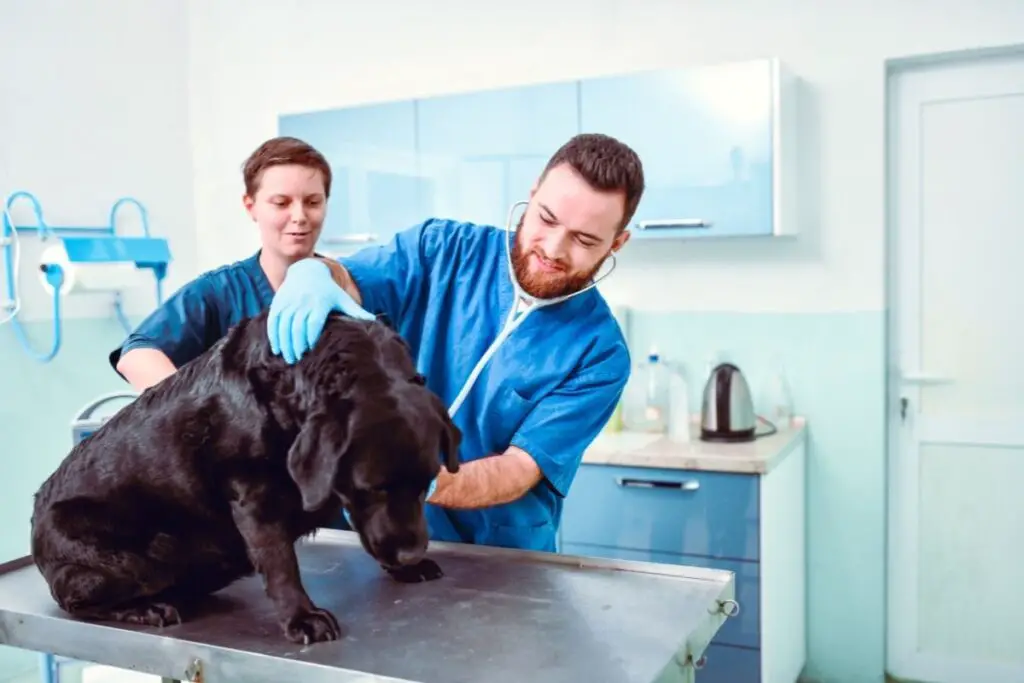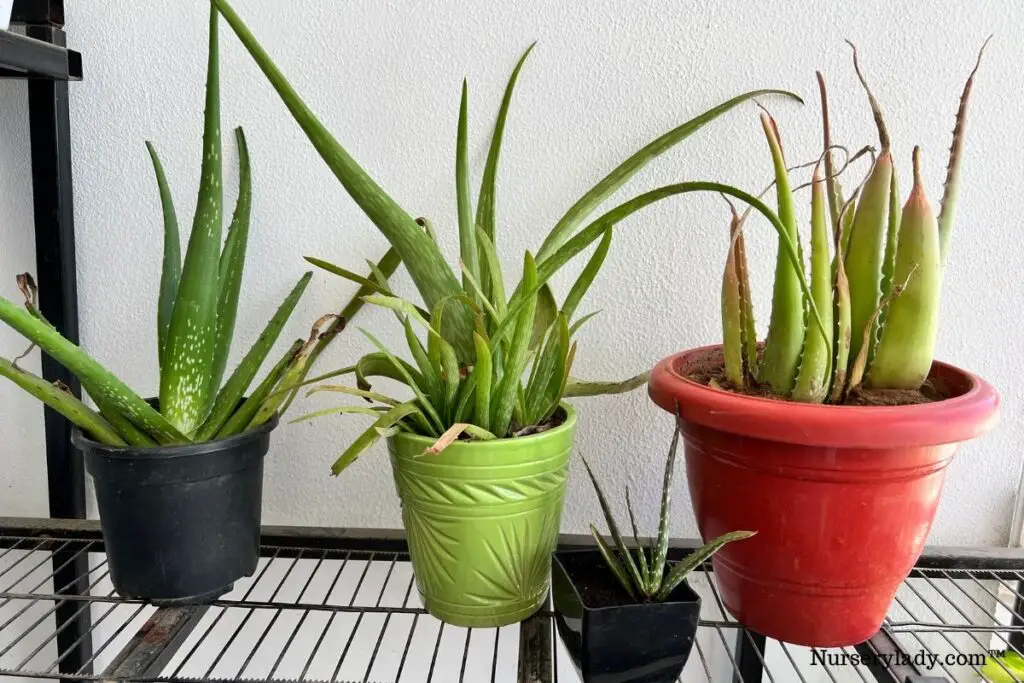Aloe Veras are grown widespread, and people love them due to their healing properties. They are even considered edible. The gel in the Aloes is extracted and used for various medical purposes. But are they safe for pets? That is what we will discuss today.
According to the ASPCA, Aloe vera is considered toxic for pets. Aloe vera latex has toxins like anthracenes, glycosides, and anthraquinones, and these will show mild discomfort to your pets. If ingested, it will lead to loss of appetite, muscle cramps, diarrhea, and vomiting.
Today, we will explore the reasons behind the toxicity of Aloe Vera, the symptoms of poison in pets, and how to keep the pets away from Aloes.

What is Aloe Vera poisoning?
Aloe Vera contains a main ingredient called saponin.
They are a group of molecules that helps to bond the sugar content.
If ingested, it can cause serious issues in the pets’ system.
The latex of the Aloe Vera plant can cause muscle cramps, diarrhea, dehydration, and nausea.
It can also reduce their blood pressure to a great level, resulting in coma and death.
When a pet consumes some portion of the Aloe Vera plant, its body metabolizes the glycosides with the bacteria in the intestines.
This further produces a compound that increases mucus and water in the colon system, resulting in vomiting and nausea.
If the condition prolongs, the pet will undergo severe dehydration, and it can be fatal if not treated the right way.
Why is Aloe Vera poisonous for pets?
The fleshy, thick, tall, and denticulate leaves of Aloe Vera are filled with gel, and the clusters of yellow flowers, are used for burns and other medical purposes.
The gel is useful for medical purposes, but the latex is not good for consumption by pets, including cats, dogs, and rabbits.
It has a toxic chemical name saponin which is very poisonous for all pets.
Ingestion can result in vomiting, diarrhea, low blood pressure, and breakdown of the red blood cells.
If not treated immediately, it can be very deadly for the pets’ life.
The latex in the inner side of the leaves contains powerful laxatives, which can cause dehydration and diarrhea.
A true Aloe Vera plant, scientifically named Aloe Barbadensis, belongs to the Aloaceae family.
It contains dangerous toxins like anthracene, glycosides, and anthraquinones.
It can give rise to too many bowel movements and vomiting.
How much Aloe Vera is toxic to pets?

Though Aloes are claimed to be poisonous by the reputed ASPCA, they have mild to moderate effects on pets.
If your pets have just passed by and got accidentally brushed by Aloes, it won’t have any issues.
The problem occurs only when they try to ingest them out of curiosity.
It is latex and its poisonous ingredients that affect pets’ health.
However, this toxicity is quite less than others.
Many other poisonous plants can show negative results even by your pet getting brushed with it.
The answer to this question depends on how much of the plant the pets ingest.
If a small amount of Aloe Vera is swallowed, it will quickly get processed through the body.
It will have very mild effects like little sickness and discomfort.
Once it is out of the system, the pets will be fine.
But if large quantities are ingested at once or daily in small amounts, it will show the worst results.
They will have diarrhea, vomiting, dehydration, and many other issues.
The pets will require IV fluids to restock their electrolyte and fluid balance in their cells.
Though the gel won’t show any bad results if ingested, the latex should not be consumed even by humans.
Otherwise, it will show the same poisoning symptoms as the other pets.
Different symptoms of poisoning

If you have seen your pets eating Aloe Veras, you can simply take them to the doctor for diagnosis and treatment.
But if you have not seen them eating Aloes but your pets have consumed them behind your back, you can identify the poisoning with certain symptoms.
Though you can pet any animal, the common ones are dogs, cats and rabbits, and sometimes horses.
Depending on regularity, knowledge, and experience, I have shared the poisoning symptoms of three common pets – dogs, cats, and rabbits.
Symptoms and results of Aloe poisoning in dogs:
- Abdominal pain and bloating
- Appetite loss
- Coma
- Abnormal heart rate
- Breathing difficulty
- Dark urine
- Drooping
- Head-shaking
- Nausea
- Lethargy
- High body temperature
- Muscle twitches and spasms
- Tremors
- Seizures
- Vomiting
- Weight loss
Symptoms and results of eating true aloe in cats:
- Red urine
- Abdominal cramps
- Vomiting
- Diarrhea
- Loss of appetite
- Depression
- Tremors
- Symptoms of aloe poisoning in rabbits
- Gastrointestinal problems
- Stomach ulcers
- Mouth sores
- Seizures
- Tremors
- Corneal ulcers
- Lesions
- Skin rash
- Paralysis
- Breathing problems
- Photosensitization
- Spasms
- Tearing
Consuming the latex and eating the aloe leaves daily is dangerous also for humans.
It can cause:
- Diarrhea
- Stomach cramps
- Kidney damage
- Increased risks of cancer
Looking for gardening supplies? We have tested 100's of products before recommending them to you guys. Check out our best pick below:
| Image | Gardening Supplies | Best Price? |
|---|---|---|
 Top
Top Top
Top | Raised Garden Bed Kit | Check On Amazon |
 | XLUX Soil Moisture Meter, Plant Water Monitor, Soil Hygrometer Sensor for Gardening, Farming, Indoor and Outdoor Plants, No Batteries Required | No Results |
 Top
Top Top
Top | 82 Pcs Garden Tools Set and Extra Succulent Tools Set | Check On Amazon |
 | Joeys Garden Expandable Garden Hose with 8 Function Hose Nozzle, Lightweight Anti-Kink Flexible Garden Hoses, Extra Strength Fabric with Double Latex Core, (50 FT, Black) | No Results |
 Top
Top Top
Top | Dual Chamber Compost Tumbler | Check On Amazon |
 Top
Top Top
Top | Sunnyglade Plant Stakes | Check On Amazon |
 Top
Top Top
Top | Organic Cold Pressed Neem Seed Oil | Check On Amazon |
 Top
Top Top
Top | Mighty Mint Gallon :-Insect and Pest Control Peppermint Oil | Check On Amazon |
 Top
Top Top
Top | Scotts DiseaseEx Lawn Fungicide | Check On Amazon |
 Top
Top Top
Top | Jacks Classic 20-20-20 All Purpose Fertilizer | Check On Amazon |
 Top
Top Top
Top | 30,000 Seeds Pollinator Attracting Wildflower Mixture | Check On Amazon |
 Top
Top Top
Top | Survival Vegetable Seeds Garden Kit-Over 16,000 Seeds | Check On Amazon |
Stages of poisoning

Acute poisoning: It happens when your pets have consumed a large quantity of Aloe Vera at one single time.
Chronic poisoning: This happens when your pets are consumed Aloe Veras daily or constantly in small amounts for a very long time.
How much time will your pet take to recover from aloe poisoning?
The time they will take to recover depends on the quantity of Aloe Vera consumed and the treatment.
If the pet has suffered organ damage, it will take time to recover.
It will also be difficult for the pet to regain good health.
Once they are treated, give them a quiet and calm place to let them rest and relax.
The faster the pets get treatment from the vet, the faster they will recover.
Follow all the guidelines given by the doctor and provide medicines in the time.
Remember to maintain a regular check-up.
Sometimes, the treatment can be quite costly.
Try to keep your pets out of their reach to avoid such expenses.
Make Aloes detestable, so they don’t ever think of loitering around them.
Else, you can also train your pets to stay away from it.
How to use the Aloe Vera gel?
The plant is indeed poisonous, but the gel inside the leaves is of great use.
The gel is loaded with vitamins, amino acids, antioxidants, and minerals.
It is the latex that causes the most harm.
You can use the gel for your pets.
You can apply it on their wound or sore to reduce their pain.
It won’t even harm the pet if they are licking it by mistake.
While searching shampoos for them, you will find that most of them contain Aloe Vera gel as one of the ingredients.
You can use those shampoos too.
The presence of vitamins and minerals can nurture the pets’ fur and make them healthy and shiny.
How to keep the pets away from the Aloe Veras?

Animals are very curious to know and understand new things in front of their eyes.
Out of curiosity, they can accidentally consume Aloe Vera.
To ensure that your pets don’t loiter around them, you can take some steps as precautions or prevention for further poisoning.
Below are some suggestions about what can be done to keep them away from Aloes:
Keep the plant in places or rooms where they won’t go.
Plant Aloe Veras at a location where the pets won’t loiter.
If your pets don’t have permission to enter a certain room like your bedroom, keep Aloe Veras there.
Additionally, keeping Aloes in your bedroom will help to purify the air you breathe.
It is a good health benefit for you.
If your garden has one isolated place, for example, the backyard of your garden, plant the Aloe Veras there.
It will keep young pets away and prevent them from getting poisoned.
Use deterrents
There are many deterrents available for keeping the animals away from the garden.
Plantskydd, Liquid Fence, cayenne powder, mothballs, materials having coyote urine are some products that can keep the pets away from them.
Spray them around the planting site or the pot (for indoor plants).
If you don’t want to use it over the plant, you can keep some plants near your Aloe Vera that can work as a deterrent, for example, Sage, Lavender, Rosemary, or Peppermint.
You can even make a repellent spray on your own.
Below are some:
- 1 part white vinegar with 2 parts water
- Few drops of essential oils with water
- For essential oils, you can use lavender or citrus.
Physical deterrents
Install physical deterrents to keep the Aloe Veras away from the pets.
It might make the pets’ paw pads feel uncomfortable but won’t injure them.
The adhesive surface won’t make them feel good when stepped on.
You can use double-sided sticky tapes.
Spike mats are also a good choice.
Give them toys
Being curious and nosey creatures, they would love to experience everything by smelling or tasting.
Giving the pets toys to distract their attention from chewing houseplants or garden plants can save them from getting poisoned.
Give the pets various types of toys.
The more varieties they get, the more distracted they will be from the Aloes. They will focus on the toys instead.
For indoor Aloes, use hanging baskets.
Many gardeners intend to grow Aloe Veras indoors and in pots.
If you are one of them, you can use hanging baskets for them.
Hanging them somewhere up will keep the pets out of reach.
It will also give a unique appearance and look fashionable.
Aloes don’t look ideal in the regular hanging baskets.
You can use a macramé hanger. Aloe Veras will look good with them.
Use physical barriers for outdoor Aloes.
You can create a fence around the planting site of the Aloe Veras.
This will make a border around the Aloe Veras.
If your pets fail to reach them, they cannot eat the Aloe Veras and poison themselves.
You can make it with anything you like or of any kind, for example, steel and aluminum rolled fencing, fence with woods, using T-pots for fencing support, etc.
This will also keep your Aloe Veras from getting destroyed.
Swap for other alternatives
If your Aloe Vera is indoors, you can swap it with other types of houseplants that are cat-friendly, for example, spider plants.
If your pet has the habit of chewing things, you can sit back and relax if they have nibbled the spider plants.
There are no deadly consequences for chewing spider plants in pets.
You can also grow some plants, both indoors and outdoors, that pets don’t enjoy, for example, cacti or roses.
The thorns in these plants will naturally discourage the pets from tasting them without chewing them.
You, too, don’t have to put in the extra effort.
You can also grow strong-scented plants like Sage, Lavender, Marigold, Pepper, etc., around them as their companions.
Their requirements might not be the same.
So, either these plants or the Aloes should be in pots.
The pets won’t enjoy their strong smell and will never turn around your Aloes.
Final words
The latex is the poisoning part of the Aloe vera but not its gel. The latex contains lots of saponins which are generally purgative substances.
They are responsible for increasing the water and mucus, thus causing diarrhea, vomiting, dehydration, and cramps. If not treated, it can be life-threatening for the pets.
On the contrary, the gel of the Aloe Vera plant is safe. You can use the gel to treat wounds in your pets.
Since they lick their body for self-grooming, consuming the gel won’t harm their health. You can also use shampoos that contain aloe gel as one common ingredient.
Though the pets won’t enjoy eating Aloe Veras after one bite as they don’t have good taste, it is still better to keep them away from the plant.
Keep the Aloes away from the pets to prevent them from wandering around them or trying to eat. Follow the care tips I suggested to deter the pets. Train them to stay away.
Source: Ornamentals toxic plants, Pet poison online, Toxic plants, and companion animals.
